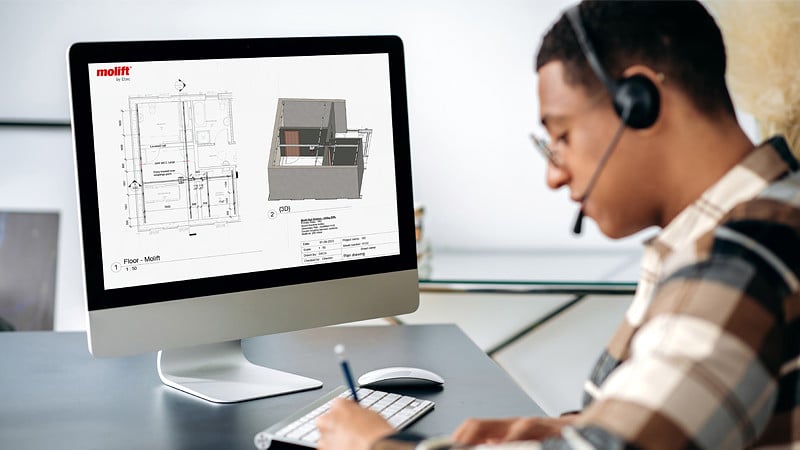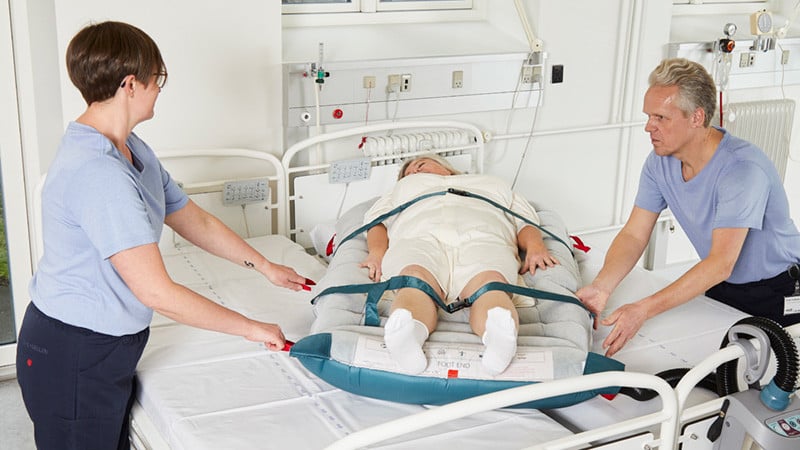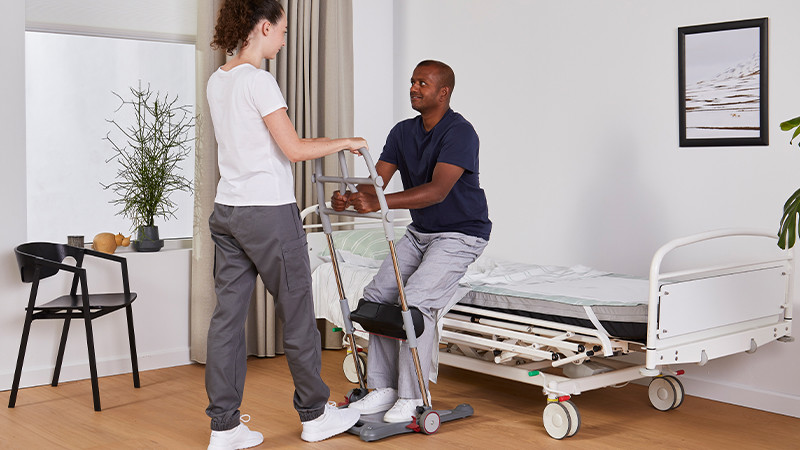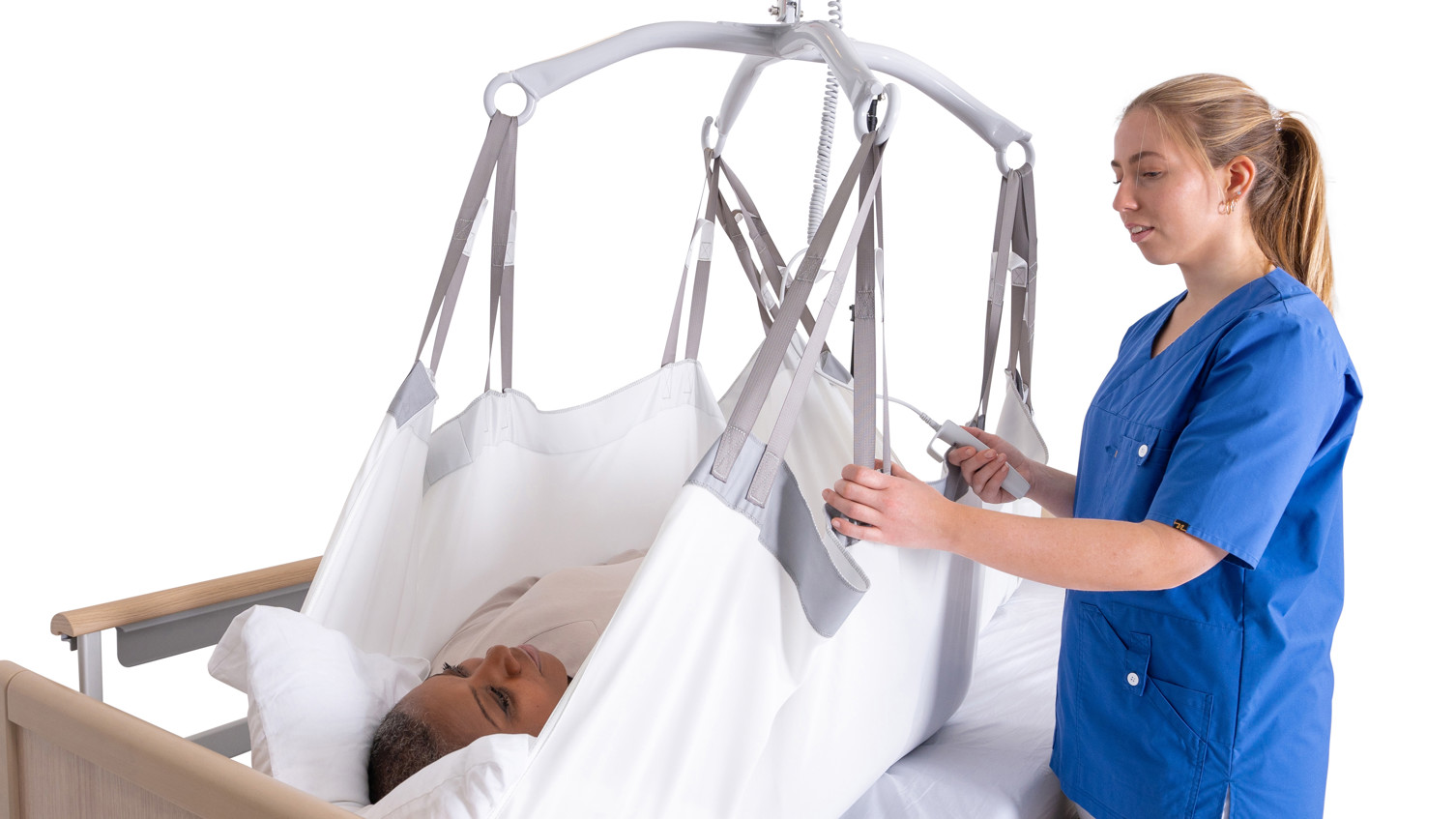Reduce the risk of injury for healthcare workers and improve patient safety
Health systems globally are facing an alarming shortage of healthcare workers. The WHO estimates a lack of 10 million professionals by 20301. For example, in the US, 47% of healthcare workers say they plan to leave their current role within the next two to three years2.
One primary reason healthcare workers leave the profession is the occupational risk of injury. The most significant contributor to injury is patient handling, the greatest risk factor for musculoskeletal injuries for healthcare workers3. Manual handling, moving, and mobilising patients in hospitals can have substantial clinical and economic implications for healthcare workers and patients4.
Preventing work-related injuries is a win-win
Needless to say, in order to maintain and improve the efficiency and quality in our hospitals and healthcare systems it is crucial to improve the work environments for healthcare workers, and one of the biggest opportunities to do this is to reduce the risk of injury related to patient handling.
Etac holds one of the industry’s widest offerings of high-quality transfer and repositioning solutions and solves a vast range of patient handling challenges in hospitals – with both the healthcare workers and patients in mind.


Architectural planning and support
Numerous studies have proven the effectiveness of ceiling hoist systems in preventing patient handling-related injury for healthcare workers. The Molift ceiling hoist system holds a wide offering of ceiling hoist motors, rail profiles, and innovative solutions for integration into all types of ceilings and walls.
Etac regularly supports care providers, architects, and construction firms with project advice, drawing support, installation guidance, etc.
Supporting aids for single-patient use
Healthcare-associated infections, such as respiratory tract infections, surgical site infections, urinary tract infections, and bloodstream infections, cause significant risks in healthcare facilities, particularly in fast-paced and short-stay environments such as hospitals5.
Single-patient use/disposable products play an important role in preventing this infection risk. They may also enable significant cost-savings and efficient operation through simpler storage and ready-to-use products with no laundering expenses and logistics.


Ambulance and admittance
The patient handling activities related to a patient’s hospital stay often start even before entering the hospital’s doors.
Etac offers air-assisted transfer devices and solutions for supine transfers to enable safe and efficient patient handling and transfers into and from the ambulance and entering the ICU.
Early mobilisation
Patient handling solutions do not only benefit healthcare workers but can also have a positive impact on patients. Research shows that immobility has a negative effect on almost every organ system. In an ICU setting, prolonged immobility increases the risk of pressure injuries (PI), ventilator-associated pneumonia (VAP), and venous thromboembolism (VTE) events6.
Therefore, early mobilisation is key to reducing the risk of such events as well as the length of stay in the hospital.


Bariatric care
Between 1975 and 2016 the worldwide prevalence of obesity nearly tripled and is today considered one of the most important public health problems7. Providing care for this patient population means an even higher injury risk for healthcare workers and an increased need for adequate patient-handling equipment and solutions.
Safe working load (SWL) for larger patients
Etac offers special equipment to enable patient handling for patients of size. The Molift Air 500 and associated slings enable a safe working load of 500 kg with one single ceiling hoist motor. The Molift Mover 300 is the ideal mobile hoist option for patients up to 300 kg.
References
1. World Health Organization https://www.who.int/health-topics/health-workforce#tab=tab_1
2. Elsevier – Clinician of the future report https://www.elsevier.com/__data/assets/pdf_file/0004/1242490/Clinician-of-the-future-report-online.pdf
3. Centers for Disease Control and Prevention https://www.cdc.gov/niosh/topics/safepatient/default.html
4. Int. J. Environ. Res. Public Health 2020 https://www.ncbi.nlm.nih.gov/pmc/articles/PMC7399987/
5. European Centre for Disease Prevention and Control https://www.ecdc.europa.eu/en/health care-associated-infections
6. Knight et al., 2018
7. World Health Organization https://www.worldobesity.org/about/about-obesity/prevalence-of-obesity